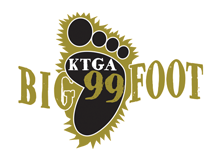April 13, 2022 |
The 8.5 percent year-over-year inflation rate announced by the government yesterday is not only the worst report in 40 years, it’s the tip of the iceberg. The inflation rate on staples that American families are buying every day — milk, hamburger, chicken — is running closer to 15 percent on average.
That was the assessment of Florida Governor Ron DeSantis Tuesday after Consumer Price Index showed inflation since the early 1980s. The government’s own report showed that prices are up 8.5 percent over the last year. DeSantis said the situation is a lot worse than what Washington highlighted in its report on the Consumer Price Index.
Audio PlayerDeSantis said the White House energy policy against domestic production is a big part of the problem. Numbers published by the state of Wyoming last month underscore how energy prices have doubled in some cases over last year. The Wyoming Insight report from the Economic Analysis Division shows that the price of Natural Gas at the three main hubs nearly doubled from March of 2021 to March of last year. The average price on the Cheyenne, Henry and Opal Hubs jumped from an average of $2.46 per million BTU last year to $4.43 in March of this year.
Wyoming Crude Oil also spiked. Wyoming sour was priced at $47.56 in March of 2021. The price last month was $92.18. The price of Wyoming sweet crude was just shy of $104 a barrel last month, up from $54.65 last year.
The price of coal nearly doubled, as well. Benchmark Powder River Basin coal jumped from $11.92/ton to $22.78 year-to-year.
Inflationary pressure produced an anomaly in sales and use tax collections. Chief Economist Dylan Bainer notes that although the mining sector was down 15 percent from March 2020, total collections were up 10%. Bainer said the increase was due to large increases in the retail trade, leisure and hospitality industries, adding that the increases could be attributed to inflation.
The big question for Wyoming’s hospitality and tourism industry is whether it can sustain the post-pandemic boost it enjoyed. American families, facing higher prices for basic staples, like milk, eggs and gas, may have fewer discretionary dollars to spend on travel and entertainment.
Here are the biggest spikes in energy:
• Propane, kerosene, and firewood: up 24.4 percent.
• Unleaded regular gasoline: up 48.8 percent.
• Unleaded midgrade gasoline: up 45.7 percent.
• Unleaded premium gasoline: up 42.4 percent.
• Electricity: up 11.1 percent.
• Utility (piped) gas service: up 21.6 percent.
The government’s reaction to the Covid pandemic is still producing hangovers. It started with shutdowns, fear mongering and mandates, all of which put a chill on the economy. Washington then made it worse with round after round so-called relief spending, dumping more money into the system while goods and services became scarcer. The net result was the value of the dollar was lowered and prices went higher.
Audio PlayerIn other words, inflation is baked into the cake of Washington’s energy and fiscal policies. At least for now, there’s no end in sight. Another report out Wednesday morning shows that producer prices surged 11.2 percent over the last year—another sign that inflation is widespread across the economy.













